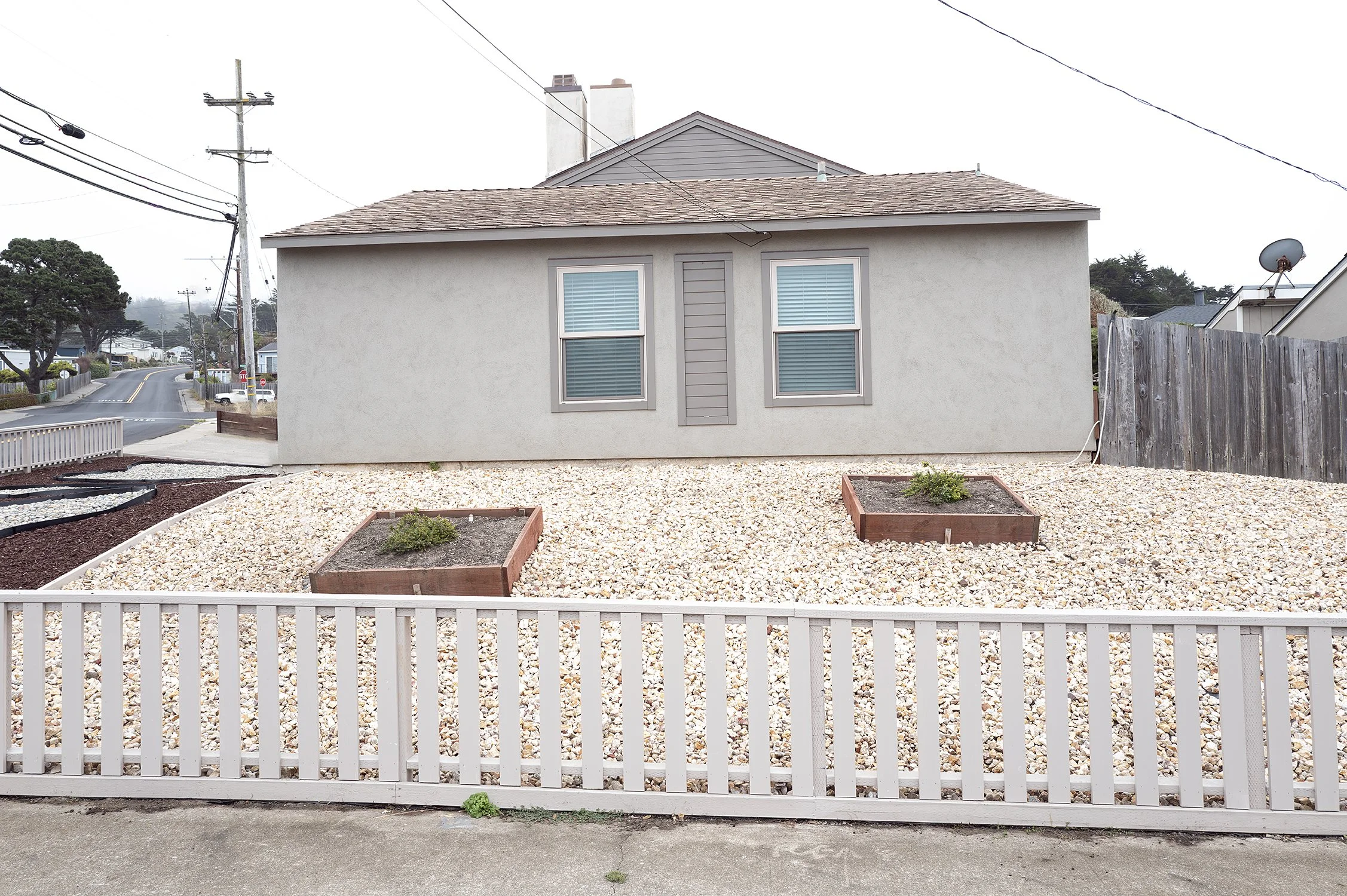SANCTUARY
These photographs explore suburban neighborhoods built in the San Francisco Bay Area between 1960 and 2000. These communities—primarily composed of single-family homes on generous lots—climb into the hills, following the earlier development of the flatlands. As a result, many of these neighborhoods back directly onto wild, open spaces, offering residents immediate access to undeveloped nature.
The images linger at the edge of private life—front gardens, façades, and the in-between spaces that stretch from one home to the next. They consider the broader geography these neighborhoods inhabit, while narrowing their gaze to the intimate zone between the curb and the house: that strange, semi-public threshold where private domestic life meets the public domain.
+ MORE INFO
I was raised in neighborhoods much like these—first in the Bay Area, later in Southern California. I spent my childhood roaming the hills behind our home, exploring hidden canyons, fishing for bluegill in creeks and reservoirs. Those early experiences left a lasting impression: a deep connection to the land, the light, and the expansive feeling of space without limits.
The neighborhoods shown here represent the last wave of tract development that still allowed for individual expression. Unlike today’s newer subdivisions—densely packed with uniform, box-like homes and minimal setbacks—these older tracts offered architectural variety. No two houses were quite the same. Set back generously from the street and spaced ten to twenty feet apart, they allowed room not just for movement, but for personal expression outdoors.
My impulse to photograph these places came from three sources: the rich contrasts in personal expression in the gardens; the dynamic interplay between neighboring gardens; and the larger spatial relationships among house, garden, and the surrounding landscape. I was especially drawn to the interstitial zones—those liminal spaces where private properties collide and yield to the undeveloped geography beyond.
The choices people make—plantings, fences, pathways, ornaments—form a quiet visual language. Each gesture, whether subtle or declarative, reveals something of the homeowner’s aesthetic, personality, or priorities. A blank façade may suggest reserve or anonymity; a fortress-like hedge, a desire for privacy or protection.
Many of the photographs focus on boundaries—how people define, mark, or negotiate the edges of their properties. These lines are rarely gentle. More often, they are stark: walls, fences, hedges that assert division more than connection. The tension between neighboring yards—where they meet, where they differ—is palpable. Two distinct realities coexist, side by side, proudly separate.
These photographs reflect on the idea of occupancy—not just living in a house, but truly inhabiting and shaping one’s surroundings. In this context, the garden becomes both personal and symbolic: our most immediate connection to the natural world, and a mirror of who we are—our values, our fears, our sense of order, and our sense of beauty.
For me, returning to these landscapes decades later was an act of reconnection. I wanted to know whether the space, light, and sense of possibility that shaped my childhood could still be found in these suburban enclaves. What I discovered was a quiet persistence: middle-class communities, weathered by time, still shaped by individual hands, still lit by the California sun, still bordered by the open hills that once called me to roam.































































